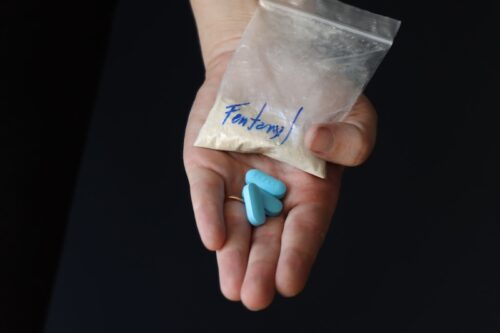Home » Rapid-Onset Gender Dysphoria in Adolescents and Young Adults
Rapid-Onset Gender Dysphoria in Adolescents and Young Adults
March 13, 2019
From The Carlat Child Psychiatry Report
Rehan Aziz, MD and Karen Hoffman, PhD.
Drs. Aziz and Hoffman have disclosed that they have no relevant financial or other interests in any commercial companies pertaining to this educational activity.
Review of: Littman L, PLOS ONE 2018;13(8):e0202330
Rapid-onset gender dysphoria (ROGD) is a newly coined but non-standardized characterization of gender dysphoria (GD). In this conceptualization, GD begins abruptly during or after puberty in adolescents or young adults (AYAs) with no prior symptoms of GD. Clusters of GD outbreaks have been noted by parents. These outbreaks have occurred in pre-existing friend groups in which members became GD or transgender-identified. ROGD is often preceded by an immersion in social media.
Littman studied this phenomenon further. She placed a link to a 90-question survey, consisting of multiple-choice, Likert-type, and open-ended questions, on three websites where parents had reported ROGD. These websites were all notable in that they questioned the medicalization of gender-atypical youth. Data were collected anonymously via SurveyMonkey.
Overall, 256 parents completed questionnaires meeting study criteria. The sample of AYAs was predominantly white, academically gifted, and female sex at birth (82.8%); it had a mean age of 16.4 years. Data collected included:
CCPR’s Take
It is encouraging that individuals who previously might have been underdiagnosed and undertreated are now gaining visibility. These findings are important to take in context, including the potential for bias in the sample websites as well as the usual caveat that such data cannot be seen as causative per se.
As clinicians, we need to identify trauma and psychopathology, and we need to manage those difficulties before addressing the AYA’s decision regarding sex reassignment or gender transition. Online content and friend groups may influence susceptible AYAs to believe that other psychological distress should be understood as GD. Some AYAs are engaged in online interactions where they are coached in what to say to clinicians, perhaps misrepresenting symptoms, in order to obtain their desired treatment. As a result, it is vital to gather information from collateral informants, including parents, pediatricians, and therapists, and to consider the role of such things as peer interactions, media influences, abuse, family dynamics, and psychodynamic processes.
We would do well to encourage AYAs and parents to allow time for the process to unfold. It may then become clearer whether the symptoms are stable versus an expression of other clinical distress.
Child PsychiatryRapid-onset gender dysphoria (ROGD) is a newly coined but non-standardized characterization of gender dysphoria (GD). In this conceptualization, GD begins abruptly during or after puberty in adolescents or young adults (AYAs) with no prior symptoms of GD. Clusters of GD outbreaks have been noted by parents. These outbreaks have occurred in pre-existing friend groups in which members became GD or transgender-identified. ROGD is often preceded by an immersion in social media.
Littman studied this phenomenon further. She placed a link to a 90-question survey, consisting of multiple-choice, Likert-type, and open-ended questions, on three websites where parents had reported ROGD. These websites were all notable in that they questioned the medicalization of gender-atypical youth. Data were collected anonymously via SurveyMonkey.
Overall, 256 parents completed questionnaires meeting study criteria. The sample of AYAs was predominantly white, academically gifted, and female sex at birth (82.8%); it had a mean age of 16.4 years. Data collected included:
- Many AYAs (62.5%) were diagnosed with at least one mental health disorder prior to the onset of GD. Anxiety (63.4%) and depression (58.8%) were the most common. Nearly half of the group had engaged in self-harm.
- Several had experienced a family stressor (44.2%) or sex-/gender-related trauma (30%) prior to the onset of GD.
- 30% of AYAs were not willing to work on their mental health needs before seeking gender treatment.
- For parents who knew the content of their child’s GD evaluation, alarmingly, 71.6% reported that the clinician did not explore issues of mental health, previous trauma, or alternative contributors to GD before continuing. 70.0% reported the clinician did not request any medical records.
CCPR’s Take
It is encouraging that individuals who previously might have been underdiagnosed and undertreated are now gaining visibility. These findings are important to take in context, including the potential for bias in the sample websites as well as the usual caveat that such data cannot be seen as causative per se.
As clinicians, we need to identify trauma and psychopathology, and we need to manage those difficulties before addressing the AYA’s decision regarding sex reassignment or gender transition. Online content and friend groups may influence susceptible AYAs to believe that other psychological distress should be understood as GD. Some AYAs are engaged in online interactions where they are coached in what to say to clinicians, perhaps misrepresenting symptoms, in order to obtain their desired treatment. As a result, it is vital to gather information from collateral informants, including parents, pediatricians, and therapists, and to consider the role of such things as peer interactions, media influences, abuse, family dynamics, and psychodynamic processes.
We would do well to encourage AYAs and parents to allow time for the process to unfold. It may then become clearer whether the symptoms are stable versus an expression of other clinical distress.
Issue Date: March 13, 2019
Table Of Contents
Recommended
Newsletters
Please see our Terms and Conditions, Privacy Policy, Subscription Agreement, Use of Cookies, and Hardware/Software Requirements to view our website.
© 2025 Carlat Publishing, LLC and Affiliates, All Rights Reserved.


_-The-Breakthrough-Antipsychotic-That-Could-Change-Everything.jpg?1729528747)



